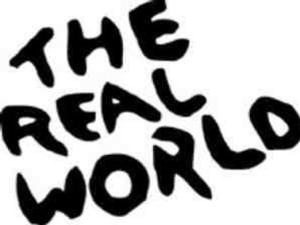
“The Scream” by Edvard Munch
We’ve all been there. That moment we become so utterly frustrated and incensed over a product or service mishap that we angrily dial the phone to reach a live person for help. If we survive the exasperating labyrinth of automated phone hell, we may finally connect with someone who – after all that – may or may not (“I have to check with my supervisor”) be able to help us. Argh!
Well, it seems that phone complaints are becoming passé. The often profane-laden phone tirades, accusations and pleas have yielded to a new medium through which to get a company’s attention: Social media.
I believe there are several reasons for this. First, social media correspondence has taken over for many as a preferred method of communication, especially among millenials. Second, today’s automated customer service phone systems are designed to work more as a moat surrounding the corporate castle, and only the fittest and those with too much time on their hands can steamroll past the murky water to reach a representative. Third, consumers have realized that the last thing a brand wants is to be shamed on Twitter or Facebook for all their customers to see. In my experience, consumers posting problems via social media channels have typically led to companies resolving matters fairly quickly.
Large brands employ a social media community manager whose job is to create awareness and engagement for the brand as well as observe and respond to customer inquiries and complaints. However many small and mid-sized companies don’t have the time and resources for a full-time community manager. So what happens in many instances is that monitoring the social channels becomes an afterthought. Companies double up social media duties, throwing them into the lap of a sales executive, administrative assistant or even (gasp) IT. And, I’ve seen many times with small businesses, the CEO/owner takes the helm of the social media channels.
If any of those scenarios are the case for you, here are some tips to effectively address customer complaints within social media channels:
1. Regularly monitor your social media sites – I believe one of the biggest assets of social media (particularly Twitter) is listening. It’s not glamorous or edgy, but it’s one of the most important things you can do to help understand your customers’ wants and needs. You don’t want to hear it second hand that someone has dissed your brand on social media; you want catch it first. Be active in monitoring brand mentions and complaints so that you can swiftly react and rectify the situation and nip situations in the bud. 
2. Respond quickly – but not too quickly – Waiting five minutes before addressing a complaint can help eliminate the possibility of a hot-headed response from a gut reaction for which we are all capable. Just as you should think before you speak, think before you tweet or post and avoid the possibility of making the matter worse. Here’s a great example (left) of the airline Jet Blue responding to a customer’s frustrated tweet. Brands that do it right respond to a complaint in four hours or less.
3. Don’t be defensive or condescending – Look, you and your brand are never going to come out ahead in a name-calling match, so try your best to avoid that scenario. And, keep in mind that while most complaints are valid, there are a group of folks out there who simply like to stir the pot just for fun. Make sure you can tell the difference between the two.
4. Acknowledge their problem – Customers – whether in-store, on the phone or online want to know that their voice is being heard. Respond initially with something like “I’m sorry to hear your [product] is not working/broken/missing a part, etc. I can help you.” Then as a next step:
5. Do your best to get them offline – You don’t want the dialogue to go on publicly through social media, especially when the customer is very angry. I recently voiced my frustration via Twitter about – of all things – the phone system maze at my bank. Within an hour, I received a response from a point person at the bank who gave me her direct number and I was able to get the matter resolved. If you really can promptly and effortlessly solve the problem, it’s alright to do so publicly – just be careful not to appear as self-serving.
6. Use humor when applicable – I’m not advocating that you make light of any complaint. But, In some cases when the problem is not a grave or serious one, adding some friendly humor can help disarm some egghead who is ranting and raving without due cause (remember those folks who love to stir the pot). Sometimes the best way to silence them is with an unexpected, cheeky response. Use discretion as this can be a tricky line to cross. A great example of this is a recent letter written from BIC pens UK, in response to what we infer was one man’s outrageous and profane complaint about his new pens (strong and explicit language here so read at your own risk): http://www.brandwatch.com/wp-content/uploads/2013/12/bicletter.jpg
In most cases, acknowledging a customer complaint and responding quickly and purposefully will be enough to resolve matters. As with all of us, customers appreciate being heard.
 As a PR practitioner, I’m looking forward to tonight’s debate. I always find it interesting and insightful to study candidates’ brand messaging and presentation skills. I’m also looking forward to the debate because it’s being held in Cleveland, my hometown.
As a PR practitioner, I’m looking forward to tonight’s debate. I always find it interesting and insightful to study candidates’ brand messaging and presentation skills. I’m also looking forward to the debate because it’s being held in Cleveland, my hometown.





